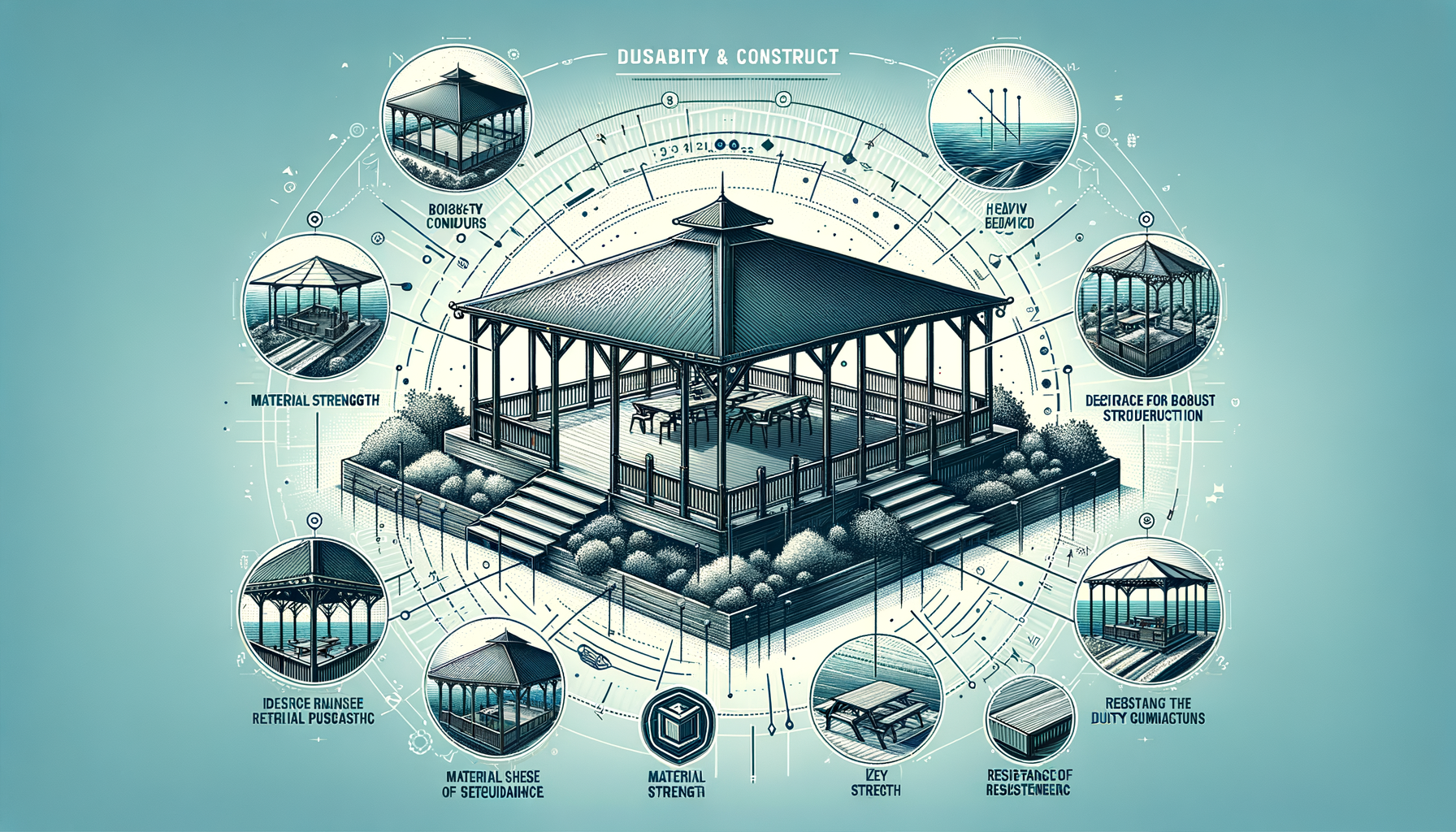Delving Into the World of Heavy Duty Gazebos: A Thorough Overview
Heavy Duty Gazebos offer an impressive and robust solution for those seeking a long-lasting outdoor shelter.

Introduction to Heavy Duty Gazebos
Heavy duty gazebos are not just a staple for garden parties and outdoor events; they represent a fusion of functionality and style, providing a reliable shelter against the elements. Understanding their durability is crucial for making an informed purchase. These structures are designed to withstand various weather conditions, offering a sturdy option for those who require a long-lasting outdoor solution. Whether you’re hosting a summer wedding or setting up a permanent backyard retreat, heavy duty gazebos can be a valuable addition to any outdoor space.
Their relevance in today’s world cannot be overstated. With unpredictable weather patterns becoming the norm, having a reliable structure that can provide shelter and comfort is more important than ever. Heavy duty gazebos are crafted from robust materials, ensuring they can endure harsh conditions while maintaining their aesthetic appeal. In this article, we will explore the various aspects that contribute to the durability of heavy duty gazebos, providing you with a comprehensive understanding of these impressive structures.
Materials and Construction
The durability of a heavy duty gazebo is largely determined by the materials used in its construction. Common materials include steel, aluminum, and wood, each offering distinct advantages. Steel frames are renowned for their strength and ability to withstand high winds and heavy snow loads. Aluminum, while lighter, provides excellent resistance to rust and corrosion, making it a popular choice for coastal areas.
Wooden gazebos, often crafted from cedar or redwood, offer a classic aesthetic and natural resistance to insects and decay. However, they may require more maintenance compared to metal options. The choice of roofing material also plays a significant role. Polycarbonate roofs are popular for their UV resistance and light filtering properties, while fabric roofs offer flexibility and ease of replacement.
When considering construction, look for features such as reinforced joints and rust-resistant hardware. These elements contribute to the overall stability and longevity of the gazebo. By selecting a gazebo made from high-quality materials and constructed with attention to detail, you can ensure it will provide reliable service for many years.
Weather Resistance
One of the key factors in the durability of heavy duty gazebos is their ability to withstand various weather conditions. A well-designed gazebo should be able to handle everything from intense sunlight to heavy rain and strong winds. Many gazebos are treated with weather-resistant coatings that protect against UV rays and moisture, preventing fading and deterioration.
Wind resistance is another critical consideration. Gazebos with a sturdy frame and secure anchoring system are less likely to be damaged during storms. Some models are designed with wind vents or sloping roofs to reduce wind uplift. Additionally, gazebos with water-resistant canopies or roofs ensure that rainwater does not pool, reducing the risk of leaks and structural damage.
For those living in areas prone to snow, choosing a gazebo with a high snow load rating is essential. This ensures the structure can support the weight of accumulated snow without collapsing. By selecting a gazebo with robust weather-resistant features, you can enjoy peace of mind knowing it will withstand the elements.
Maintenance and Care
To maximize the lifespan of a heavy duty gazebo, regular maintenance and care are essential. This involves routine inspections to identify any signs of wear or damage. For metal gazebos, checking for rust and applying protective coatings can prevent corrosion. Wooden gazebos may require periodic staining or sealing to maintain their appearance and resistance to the elements.
Cleaning the gazebo is also crucial. Removing debris from the roof and cleaning the frame and canopy with mild soap and water can prevent the buildup of dirt and mold. During the winter months, it may be advisable to disassemble or cover the gazebo to protect it from harsh weather.
Proper storage of removable parts, such as fabric canopies, is important to prevent damage when not in use. By dedicating time to regular maintenance, you can ensure that your heavy duty gazebo remains in excellent condition, providing reliable shelter for years to come.
Choosing the Right Gazebo for Your Needs
Selecting the right heavy duty gazebo involves considering several factors, including size, style, and intended use. Determine the size based on the space available and the number of people you plan to accommodate. Larger gazebos provide more space but may require additional support and anchoring.
Style is another important consideration. Traditional designs offer a classic look, while modern styles may feature sleek lines and contemporary materials. Consider the overall aesthetic of your outdoor space when choosing a gazebo style.
Finally, think about the intended use of the gazebo. If you plan to use it for entertaining, features such as sidewalls or mosquito netting can enhance comfort. For those seeking a permanent outdoor retreat, a gazebo with a solid roof and integrated lighting may be ideal. By carefully considering these factors, you can select a gazebo that meets your needs and enhances your outdoor living space.